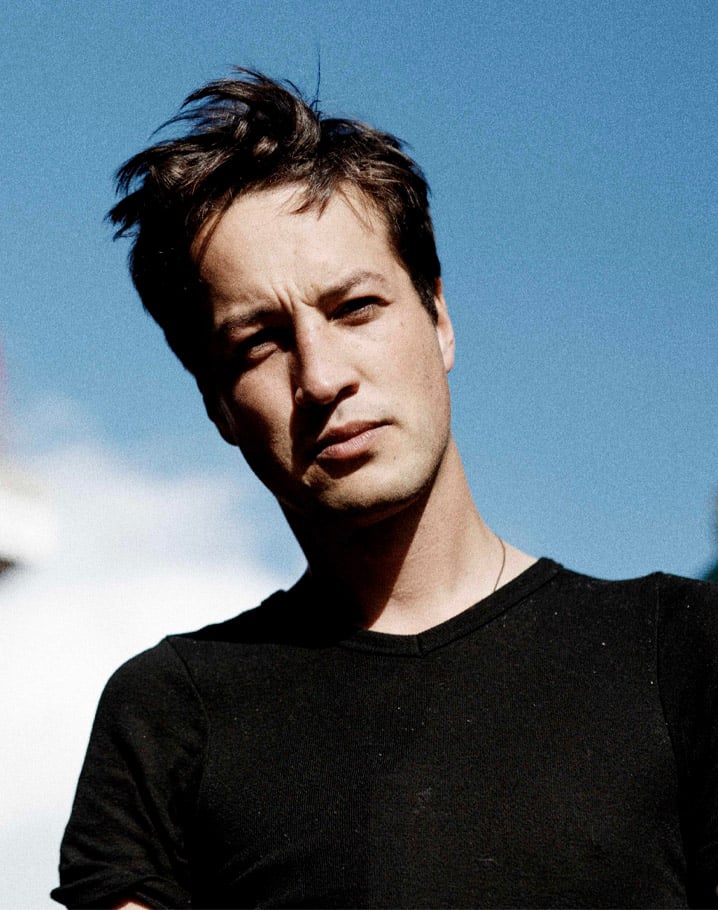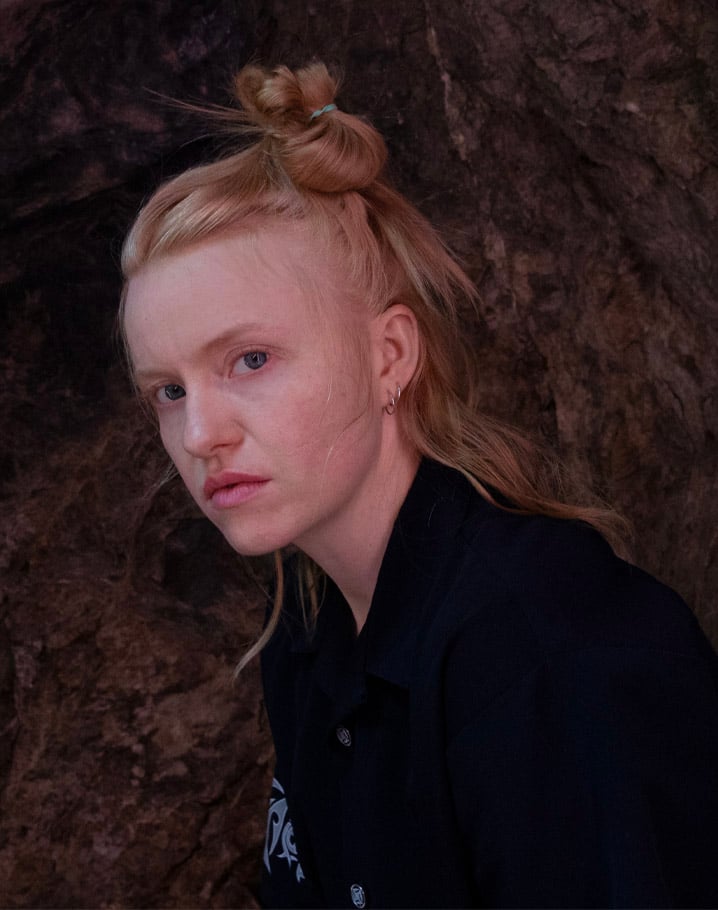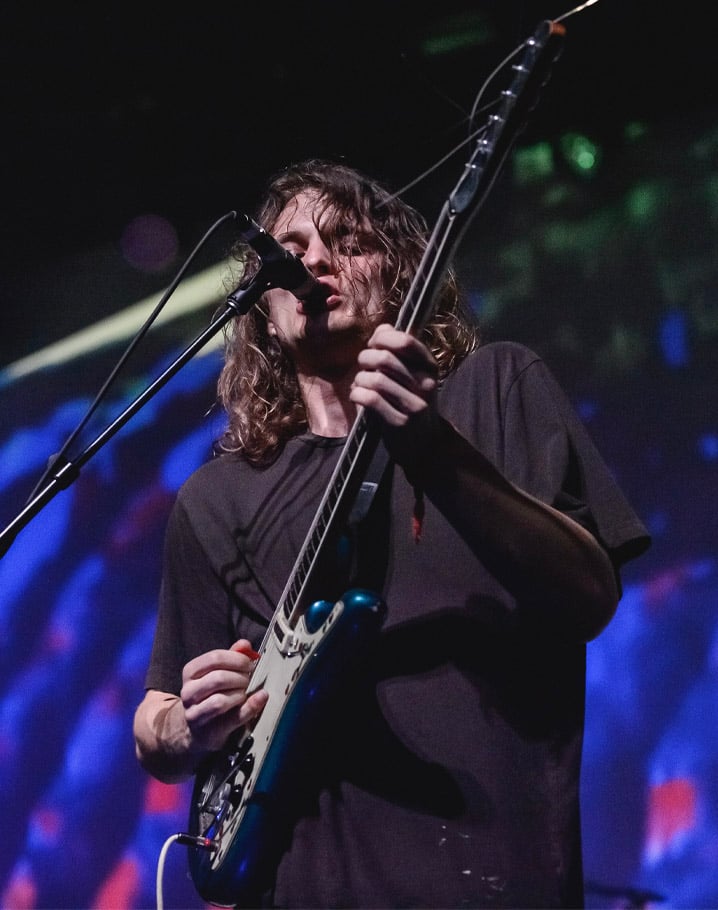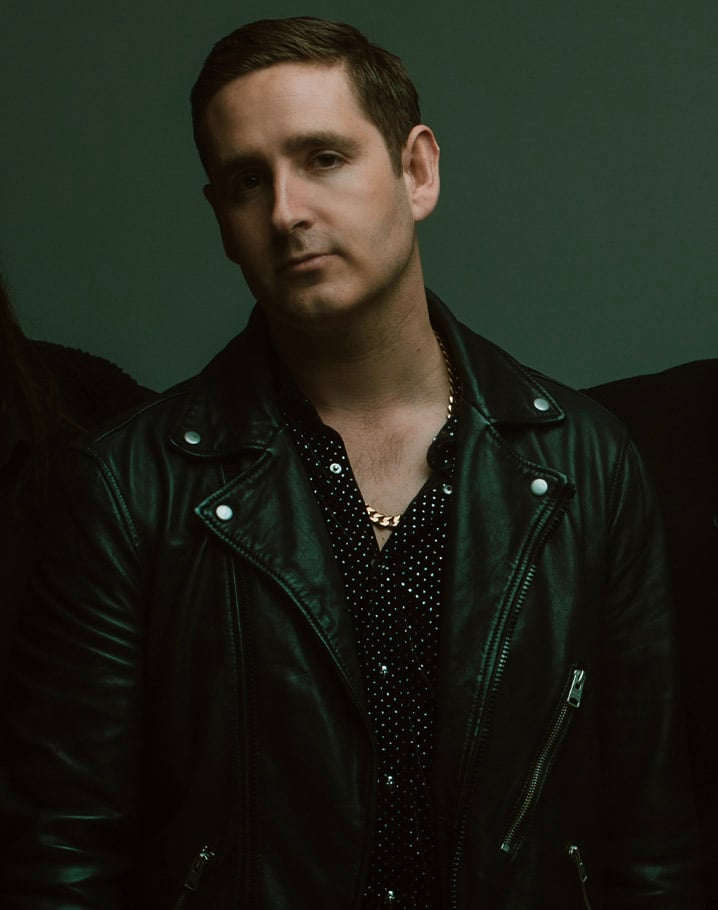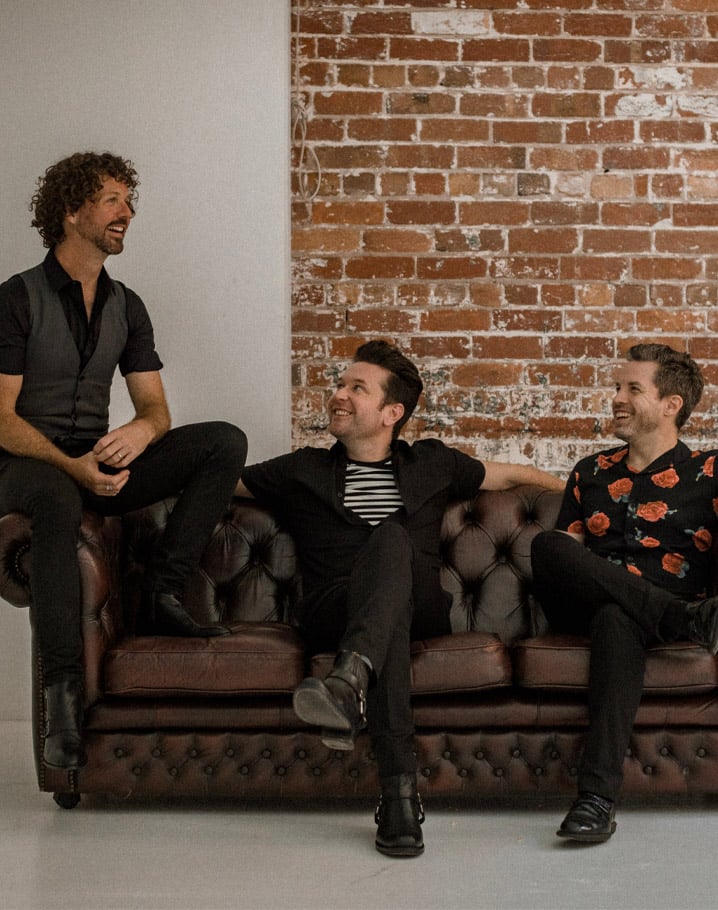Rolling Stone’s 50 Greatest Australian Artists of All Time
For as long as music has existed, so too have artists, and corresponding opinions about which of these artists is better. Any sort of discussion about music and varying degrees of greatness is guaranteed to become one of the most contentious topics imaginable, but often, these heated discussions about music tend to overlook the exceptional artists born and bred in our own backyard.
In a year when a global pandemic has emptied stages the world over, and musicians need support more than ever, we felt it was time to set our sights on the Australian names who have helped put local music on the map here and abroad. Thus, the idea for the 50 Greatest Australian Artists of All Time was born.
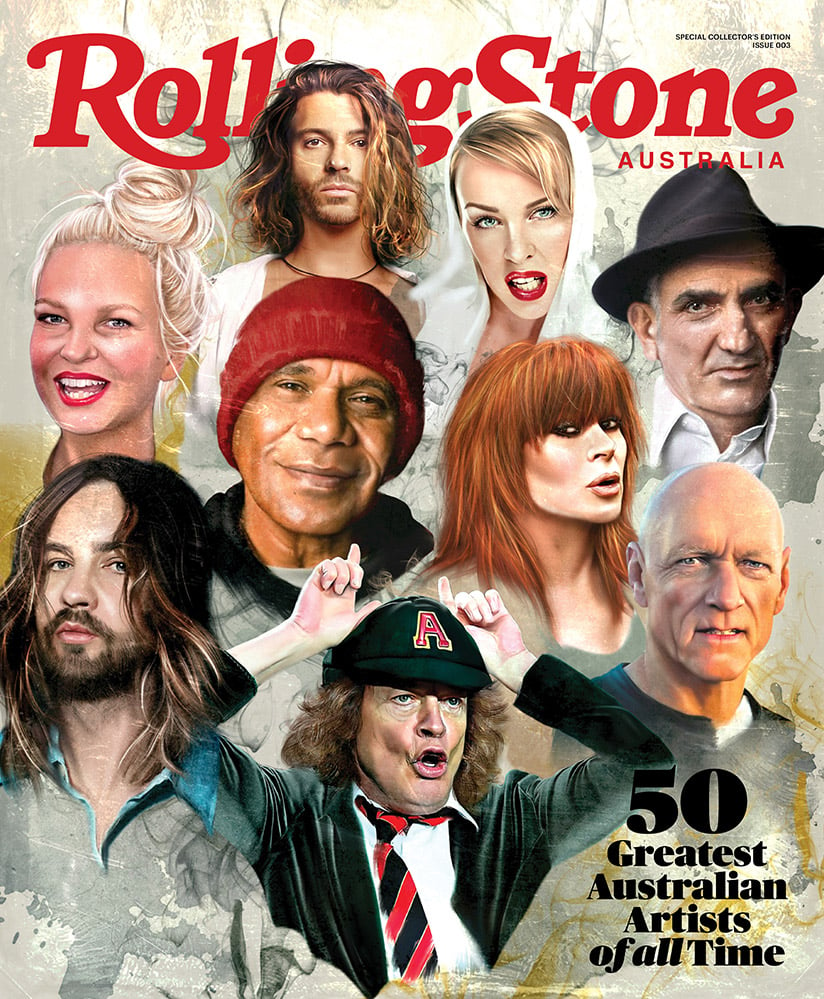
Cover illustration by Debb Oliver.
Originating as an idea for an online feature, our vision soon became more grandiose. Before long, we were receiving and tabulating suggested inclusions of hundreds of Australian artists, from critics, music industry figureheads, past Rolling Stone Editors and writers. This list has been laboured over by some of the most respected names in music.
Paired with testimonials from fellow artists, whether they be veterans or contemporaries, the result is a list which is bound to be one that generates countless hours of discussion and debate but one that also seeks to honour the immeasurable musical contributions from artists that call Australia home.
Their legacies may be long-lasting, or they may be names helping to bring newfound focus onto this great southern land, but at the heart of it all lies an inextricable link with the musical fabric of Australia.
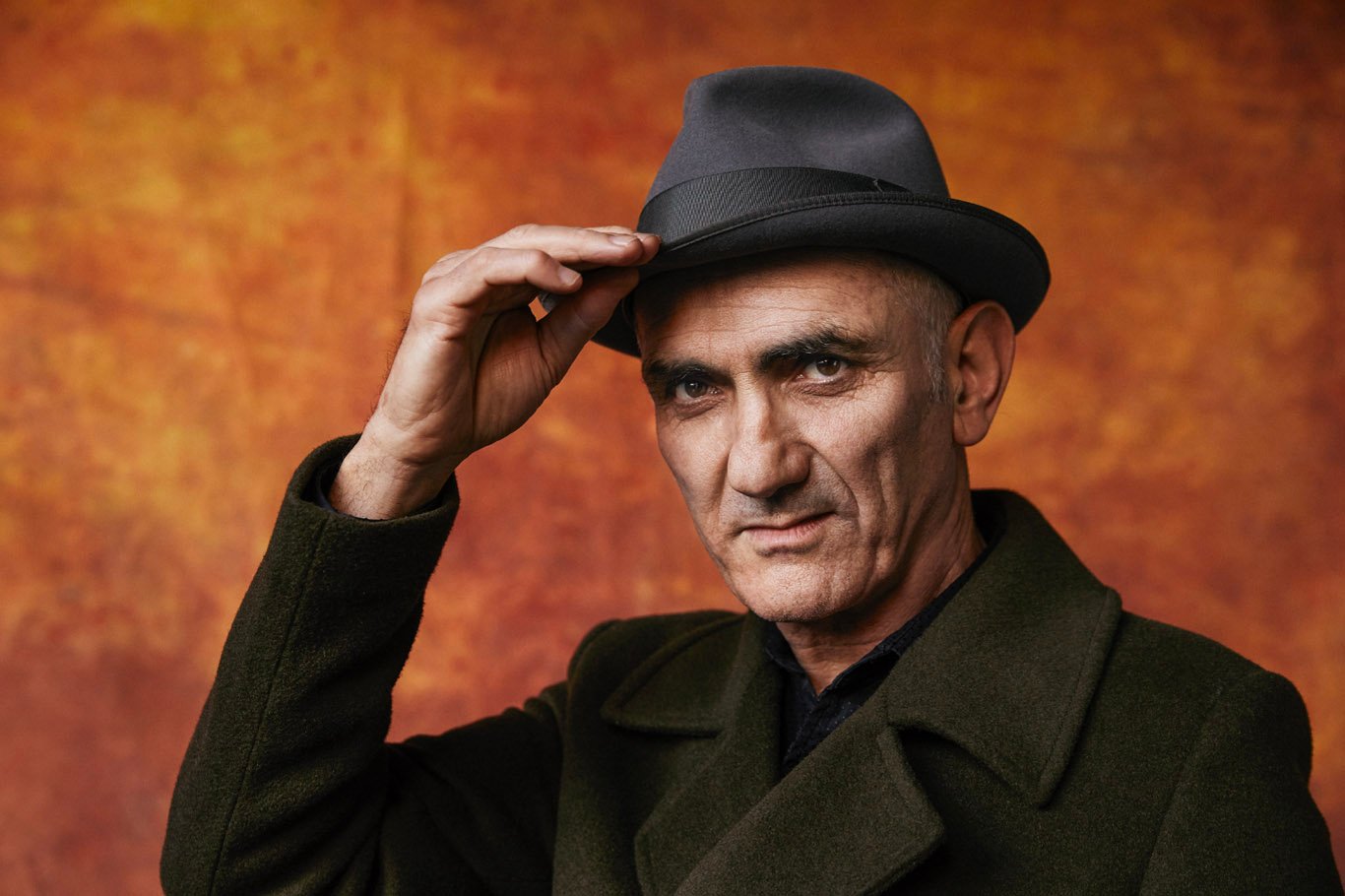
Paul Kelly
I must’ve been ten the first time I heard a Paul Kelly song. We had a new Macintosh computer and my dad would borrow magazines from the library and rip the accompanying compilation CDs into iTunes (sorry Paul, sorry Rolling Stone).
The only problem was that dad never logged who the artist was, so there I was one day scrolling through the anonymous tracks when “My Winter Coat” came on. It had me completely: The streets the lovers walked down were the streets of my hometown; the market they played in was surely the one at the Christchurch Arts Centre. And at that age, I had seen just enough of the world to know the lover’s act of practical charity to shield the other from the cold with a well-fitting coat was more than just a prosaic detail. There was something luminous about everyday life.
A long time passed by before I ever actually registered the name Paul Kelly. My early teens saw me digging deeply into the cultural mythos of the American South, first through the likes of Dylan and The Band and then further back to Hank Williams and the Stanley Brothers. Then one day I stumbled across an album in the bluegrass section of the library: Paul Kelly with Uncle Bill - Smoke.
I was dubious, but having exhausted all the authentic, American bluegrass I thought I may as well give this outfit from Australia a crack. And there it was. That voice from the winter markets; piercing, strong and sure, and at the same time fragile and searching. This time it was a murder ballad sung in searing three part harmony, “I Don’t Remember a Thing”. Here he was expertly wielding musical and literal forms I naively thought sacred and specific to a place far away from Australia and New Zealand. It made me think it might be possible for a boy from Lyttelton to tell those kinds of stories, in that way, too.
"It made me think it might be possible for a boy from Lyttelton to tell those kinds of stories."
To this day, Paul remains humbled by the task of songwriting, and awed by others successes. I think it’s this humility that allows so many Australians of all walks of life to trust him and celebrate him. To trust him with their stories; their sense of shared identity, loosely construed. Hannah Arendt said that good storytelling “reveals meaning without committing the error of defining it” – and that’s what Paul does. Nothing is axiomatic. Human joy and suffering are contingent states and, no matter how dark the dark or bright the bright, something might come along any minute and flip the script entirely.
A few months ago I was sitting backstage at a gig in Melbourne, and there was Paul, reading a book in the corner, as he’s often known to be doing. Anyone who’s been me in that situation knows the deafening silence. After a long while of nothing he peered over the top of his glasses at me. “Marlon, what’s your favourite key change in a song?” I furiously scanned my brain for the most interesting answer. “Probably the one in ‘And I Love Her’…”. He paused and thought for a moment. “The semitone up for George's solo. Yeah, that is a good one,” and went back to his reading.
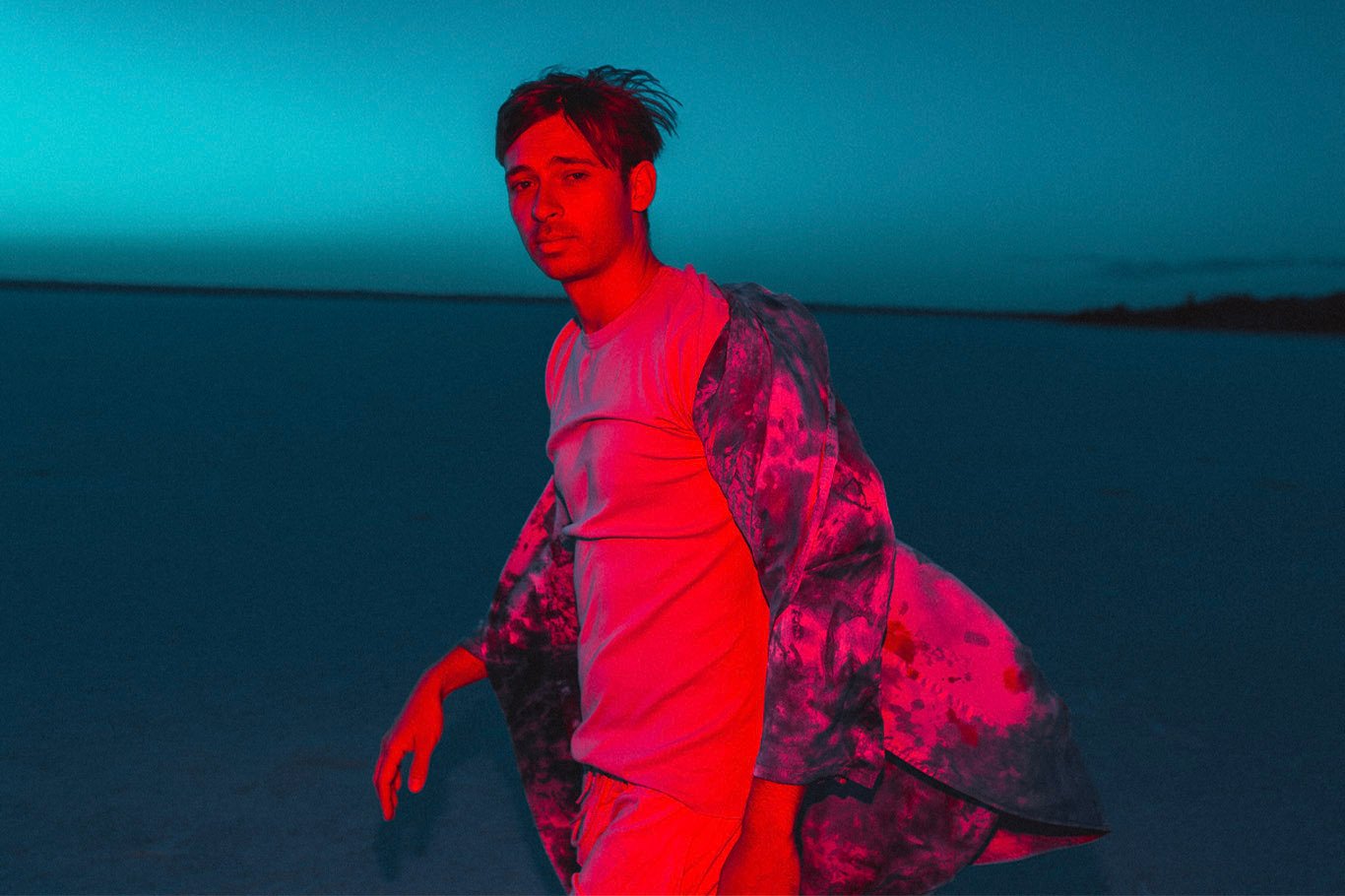
Flume
I first started working with Harley over the internet. I was in a small town in New Zealand at the time and he was alternating between LA and Australia, trying to finish his second album, Skin.
I would get a few demos sent to me via email and get to work – I had free range to do whatever I felt the track needed. I would send my vocals back and receive some more demos and repeat. At the time, I didn’t really understand his process. I was wondering if anything would ever come of these things that I had written, but I was intrigued. I loved that I got to hear the worlds that he was creating; every track was so distinct and intricate.
When he finally sent me the finished arrangements of the tracks, I was pretty shocked. The vocals that I had painstakingly recorded had been warped, pitched, and sometimes skewed beyond recognition. He had created completely new landscapes, using my vocals not just as a layer on top of his productions, but as an instrument integral to the DNA of the track.
It wasn’t until a few months later that we would meet in person and get to work together in real life. Our first session was in Sydney at Eric Dubowsky’s spot, and it was there that I got to witness him producing in real time.
"He is a true experimenter."
It's easy to know when something has piqued Harley's interest in the studio. He will find a single sound or technique that he knows has potential and play with it until it's mutated into something truly exciting and unique.
I think this sense of play is what keeps him innovative record after record. He will always have a new plug-in that he’s obsessed with – something that mangles up a perfectly beautiful piano sample, a distortion that makes a sweet synth pad sound like it’s been recorded in the depths of an industrial estate, and he’s not afraid to use these sounds within the boundaries of a conventional pop arrangement. Nothing is too messy, the edges don’t need to be tidied up and if they were, the magic would be lost.
Because of this, his tracks end up having his fingerprints all over them, it’s obvious when a Flume track comes on the radio, which is not a small feat for an electronic musician. He is a true experimenter and it’s no wonder that his signature sound has inspired many producers to push the boundaries of their work further.

Silverchair
We were introduced to Silverchair at the age of 13/15, back when we first started playing music together. Our families and friends would always come watch us at our local pub shows, eventually coming up to us after the set and saying, “Silverchair hit the big time at your age, you know”. At the time it was trippy for us to hear that.
Being young scrappy kids growing up in a small rural town on the outskirts of a Steel City, it was insane to think that making records and touring the world could actually be possible for us. Even today, it is just so unfathomable how big they became, compared to what you could even attempt to get these days. Not that “being big” is the most important thing, but it certainly played a part with it being achievable and something for us to strive towards.
"Riffs. Vocals. Concepts. Artworks. Riffs. Lyrics. Riffs."
Once we took our families’ advice and started listening through their back catalogue, the level of maturity throughout their records was something remarkable that stood out and really influenced us. Riffs. Vocals. Concepts. Artworks. Riffs. Lyrics. Riffs. Everything was just so legit and tweaked for a bunch of kids our age to be creating.
After listening to those records front to back since we first started playing and writing music, it has been really strange to hear comparisons of Zach’s vocals with Daniel Johns in one of our new singles, “Itch”. Zach’s vocals, lyrics and overall songwriting has evolved since our earliest recordings, with more conviction and emotion shining through as time goes on. Perhaps Zach is subconsciously tapping into that Silverchair realm, purely due to all of their songs being so significant and permanently etched into all our brains without us even knowing it.
It goes without saying that Silverchair have had a massive influence on every young Australian band that ever came out after them, and we owe so much to them for showing us the way. Cheers boys.
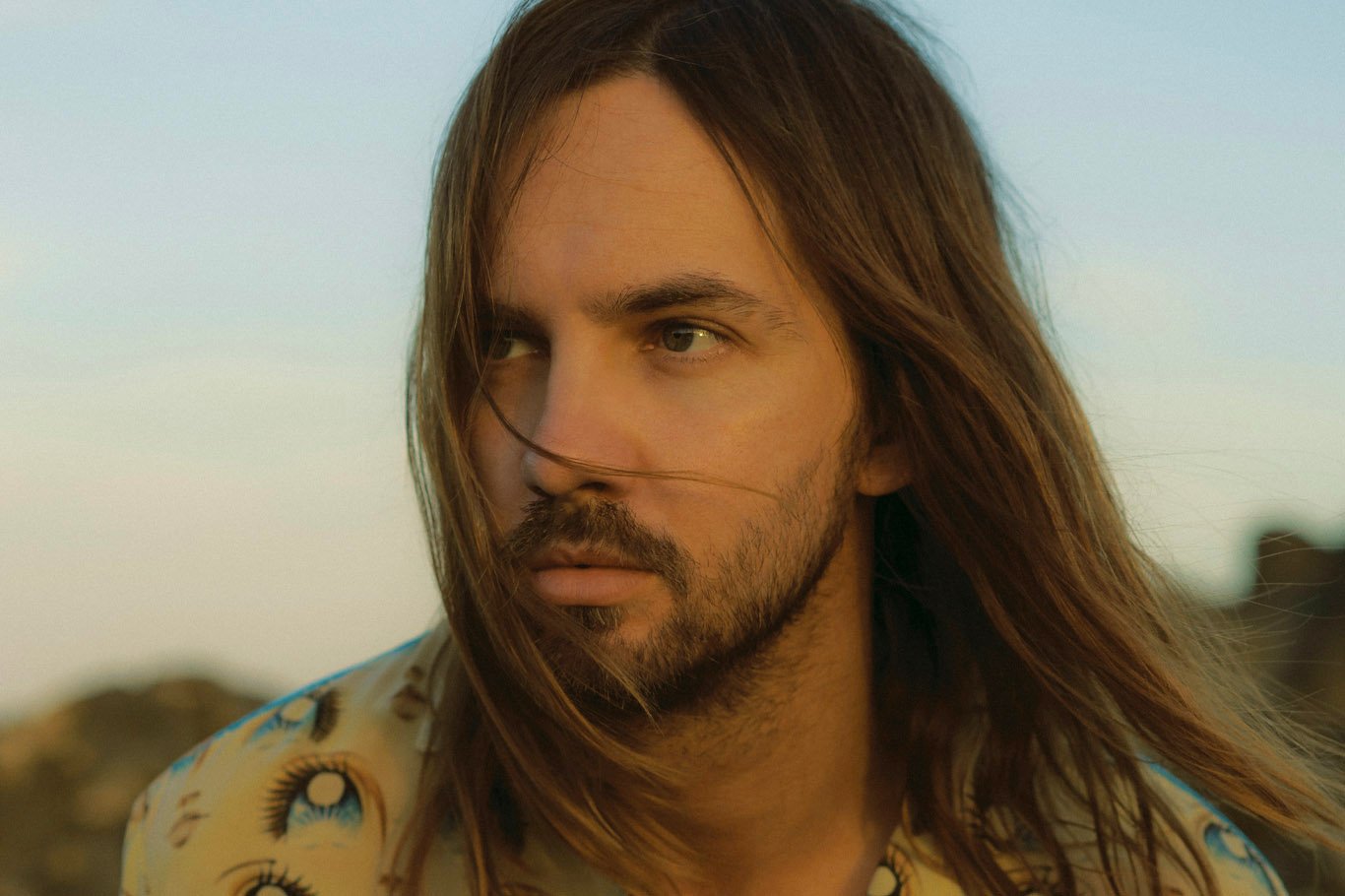
Tame Impala
"You’ve gotta see this band!” Some friends woke me up at Meredith Music Festival 2008. It was 11am and they’d just started. It had been raining for three straight days and I’d just gone to bed. Wet, muddy, cold, and sleeping in a tent but still drunk, I took the advice and checked out Tame Impala.
Tame, back then, were loose and loud and large. Burning like a white dwarf. The band was on fire. Sound waves vibrating through the rain. Wide-eyed, wide-grinning punters soaked to the skin. Plastic ponchoed pigs in mud. Meanwhile, the band looked like they’d just walked off Scarborough Beach in 1966. I loved it. Like explorers searching for a sound. Or maybe a feeling.
You know how people talk about that time the Sex Pistols played a show and everyone there started a punk band? Well this was like that. There weren’t many people at the show, but I’m pretty sure they all went home and started a psych band. I did.
"You know how people talk about that time the Sex Pistols played a show and everyone there started a punk band? Well this was like that."
Tame has gone supernova since then. Their meticulously-crafted records have encouraged legions of fans to get introspective and really listen to the music. To understand the countless hours that go into crafting an album – and that’s beautiful.
Do yourself a favour. Put on some headphones, turn the lights off and chuck on Lonerism. You could take acid too, if you’d like. But you don’t need to. It’s already psychedelic enough.

Midnight Oil
As an Australian boy in the late Eighties, the Oils were a ubiquitous musical presence when your life was tethered to your parents' suburban social activities. Saturday afternoon drinks after tee-ball and backyard BBQs fuelled by cheap sausages and bottles of Rosella were always musically awash with their desert hues.
I was drawn to the sound of their work before I even understood what it meant. As a ten-year-old, I had no idea what "Beds Are Burning" was about – but I knew it was powerful. I would begin to understand the scope and definition of that power over the next 30 years.
"No other band has so respectfully diarised our unique Australian challenges."
The power of great art is in its ability to find you and stay with you by any means necessary. My journey with the Oils has been one which has morphed from initial musical resonance to a far more meaningful cultural appreciation. They have shared their ideologies with us for five decades and with each new zeitgeist there is always reason for their work to find relevance again and again and again. This is real power as an artist.
As a songwriter you often seek inspiration in other artists’ work. You search for a meaningful connection. You need to trust the material, the intention, and the execution. This takes time. You gain this trust by having your songs transcend single moments and build a catalogue that defines many moments. That’s at least how I see it, and that’s what the Oils relationship is for me now – one of trust.
No other band has so respectfully diarised our unique Australian challenges, our frustrations and existence as these Northern Beaches icons. I think Midnight Oil are the most important Australian band, period. Powerful. Passionate.
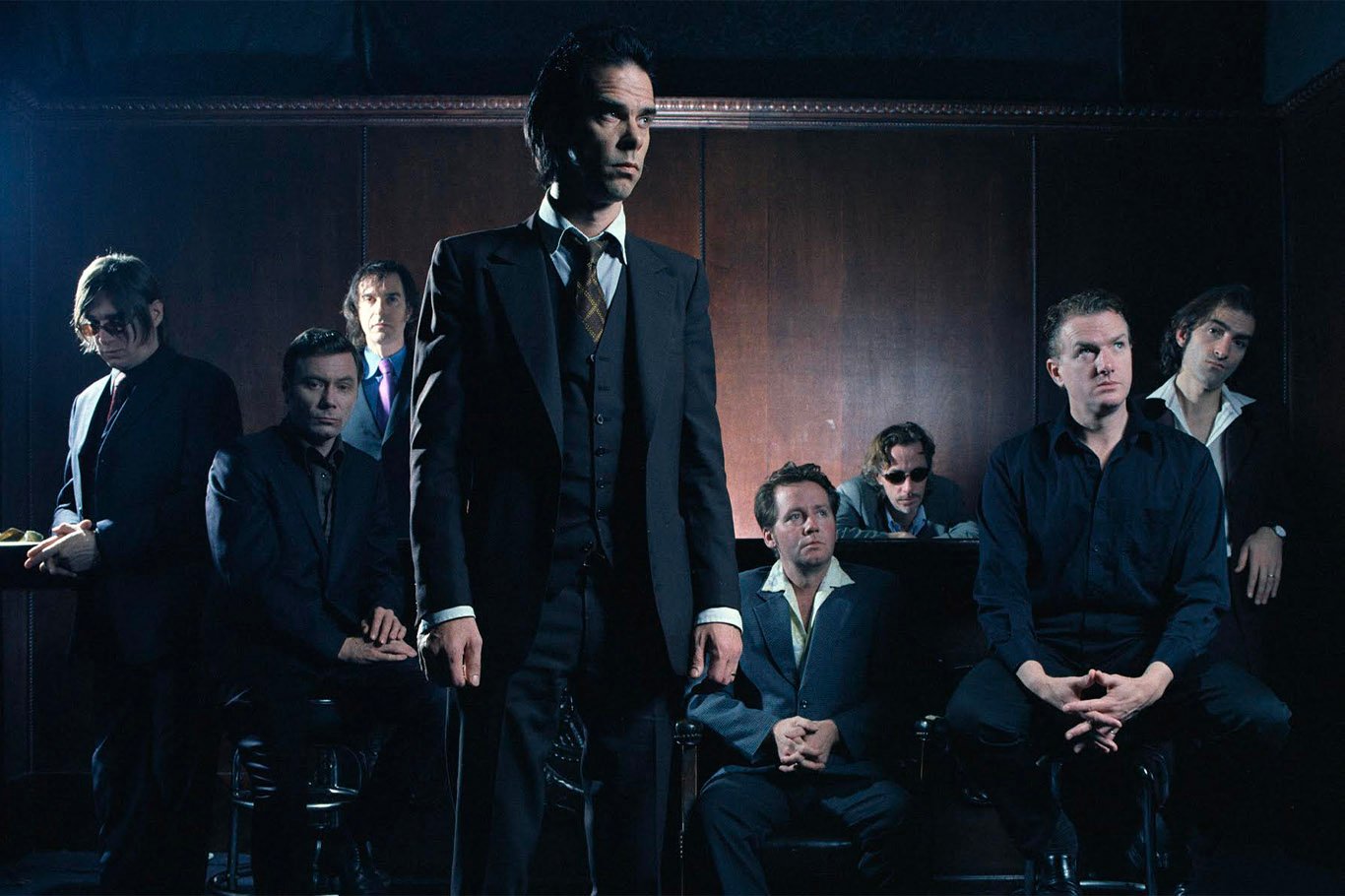
Nick Cave And The Bad Seeds
I have a difficult relationship with Nick Cave & The Bad Seeds. Don't be misled, the group, and all of Nick’s work has had a profound impact on my career, and even shaped in a way the person I am today. I could go on about my first experiences hearing and seeing them, how their music, and Nick’s onstage persona stunned me. But I think that's a story you have heard before, and are perhaps familiar with yourself.
In this moment, as I sit to write about the band, I want to talk about grief. I was on a plane when I watched [2016 documentary] One More Time With Feeling. I had to stop halfway through and watch an episode of Family Guy to stop me from falling so deep into heartache that it would take a little too long to climb back out. I was on a plane when I listened to Ghosteen, I was weeping in my seat, as my bandmates slept around me. I lost my older brother some time ago, and when Nick shares his grief with us through his music, we share grief together.
"We should all be so grateful to have an artist that believes so much in the worth of art."
As a listener, you mourn together with Nick. He says the words that you can not: "A star is just a memory of a star, we are fireflies pulsing dimly in the dark, we are here and you are where you are". He takes his life, and the world that surrounds him and gives it to us as art. It must be so burdensome, but it is the reason he has such adoring fans.
Because his work is real, he is not trying to make hits, he does not fear critiques, he just makes music that is the truest reflection of his soul at that time, and we should all be so grateful to have an artist that believes so much in the worth of art, and gives themself to us for the purpose of art.

INXS
Ask any band growing up in Australia when they first thought they could make it overseas, and who knows what they’ll tell you. But for me it was the first time I saw the footage of INXS live at Wembley Stadium. INXS are, in my eyes, the perfect embodiment of Australian musical ambition, and my inspiration.
Despite Michael Hutchence’s allure as Australia's only bona fide rock star (a tag he probably would have hated), INXS are a sum of their parts; Andrew Farriss’ writing with Hutchence as the muse and vice versa, the solid rock funk of Jon and Tim Farriss, with Kirk Pengilly and Garry Gary Beers driving the band in a way that makes you want to both dance and sing along at the same time.
They often get tied to the era they recorded in, but like all waves and trends, INXS keep coming back again and again. Despite the playfulness of their work, they stood for something so much more, pushing boundaries, and creating the first widescreen stereo view of Australia.
It was this widescreen approach that we took into the recording of our third album Black Fingernails, Red Wine. It was 2005, and we had set up camp at a remote recording studio on the East Coast of Australia, an hour-and-a-half out of Sydney at a place called The Grove.
"INXS are, in my eyes, the perfect embodiment of Australian musical ambition, and my inspiration."
The studio had been built and set up by Garry Gary Beers, the bass player of INXS, and it was with this as our inspiration that we dug down deep and set out to record our most ambitious album yet. We applied the same basic formula: make the songs sound like they’re coming from the future!
Growing up in the late Eighties in Western Australia it was impossible to avoid INXS – their music was on the radio, girls were writing their names on the inside of school desks, and the style and swagger had infused itself into popular culture. Not only in the way guys wore their hair but also over the oceans and into movies like The Lost Boys.
But to be honest, as a ten-year-old, I found songs like “Devil Inside” and “Need You Tonight” a little dangerous and overtly sexual. Despite INXS being a huge pop band and appealing to the kids of a generation, there was a lot more going on in the music than they were being given credit for, and it wasn’t just for kids. The songs were about light and dark, giving in to excess and being lost in the night.
On the album Kick, their most ambitious to date, you could feel the hedonist in “Need You Tonight” or the heartbreak and joy of love in “Never Tear Us Apart”, sometimes both at the same time, which I only related to when I was older.
What INXS meant to me was that it’s okay to be big and bold in your musical statements – you can do something that is cool as well as commercially accessible.
When I got to contribute to Original Sin by singing on the track “To Look At You” in 2010 it was surreal. I got to experience the power of INXS music, but then again haven’t we all?
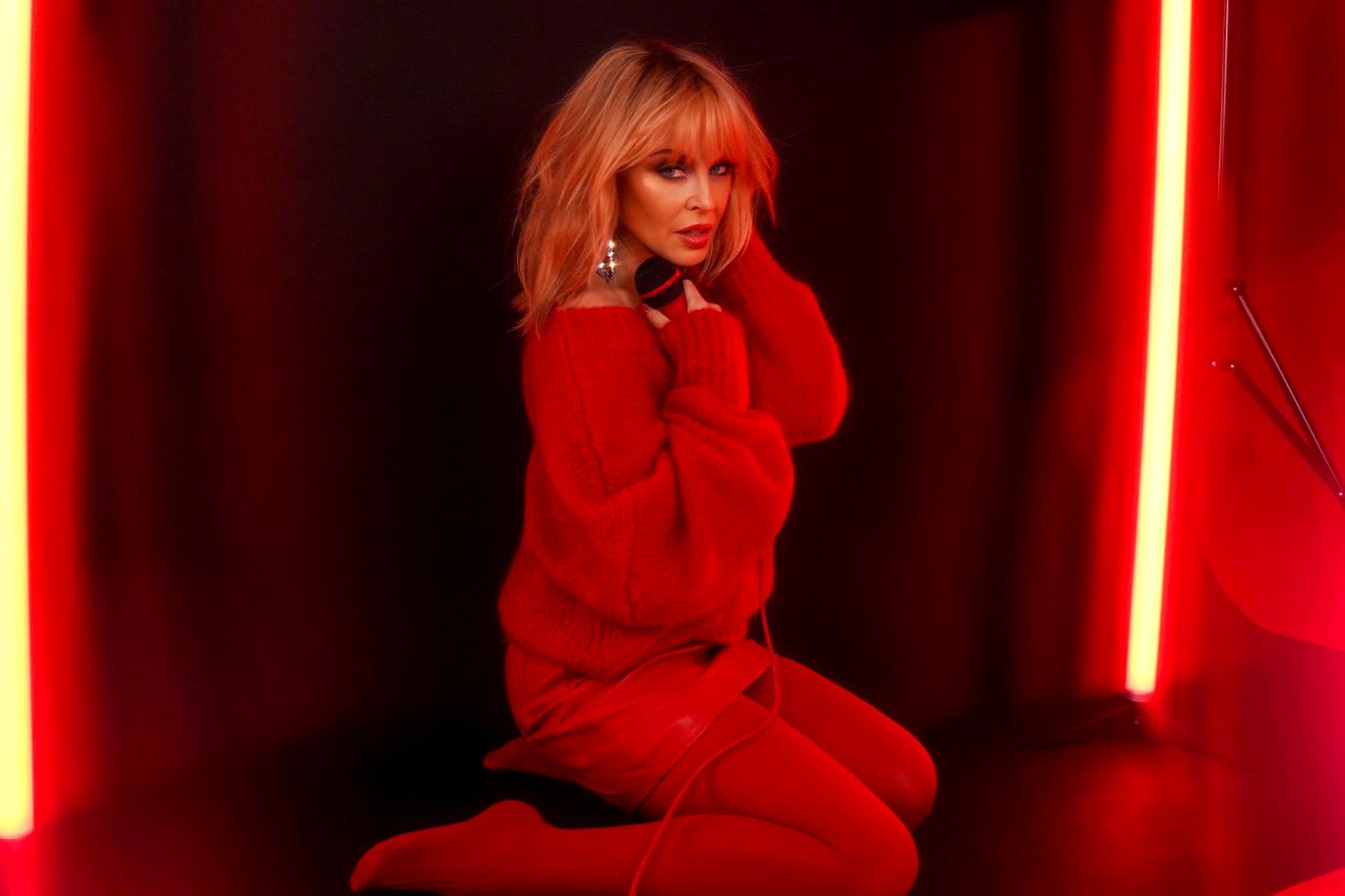
Kylie Minogue
Since I was a little kid, Kylie Minogue has flown the Aussie flag all around the world and shown little girls like me that Australian artists can take on the best in the world. As so many little girls did – I grew up dancing to her music videos, singing her songs and dreaming that one day I could be like her. Kylie is such an amazing example that hard work and dedication will always be what separates you from the rest, and is the key to longevity in this business.
One of the things I love the most about Kylie is that there is nothing she does where you ever feel like it’s inauthentic or undercooked, or like she is doing anything for the sake of it - or for shock value. With Kylie, it is always genuine and no matter how much success she has had over the years, she is still pushing boundaries, making statements and experimenting.
In my eyes, Kylie is the one who set the bar for female Aussie pop artists. Kylie is the OG Australian pop artist, and you always look to her and reference her career for inspiration and motivation. She is an icon, a living legend and is in a league of her own.
"There is nothing she does where you ever feel like it’s inauthentic or undercooked."
Kylie has been such a chameleon over the years and is constantly reinventing her look and her sound. It’s always been really exciting as a fan to see what she is going to do next. Her music videos have been so iconic - from the curly-haired fresh-faced teen in “Locomotion” to the gold hotpant wearing vixen in “Spinning Around”; The grungy Nineties Kylie in “Confide In Me” to the futuristic “Can’t Get You Outta My Head” Kylie; The country Kylie in “Dancing” to the disco diva in “Say Something” – her videos are legendary!
Not to mention her live shows. I mean… Kylie is the ultimate showgirl! From the costumes to the sets to the choreography, her shows are OTT, camp, fabulous and innovative - and the ways she brings her iconic songs to life on stage is incredible.
Over the years Kylie has brought so much joy to so many people’s lives. I have so much love and respect for Kylie, and we are all so lucky to have been given the pleasure of enjoying her music and incomparable talents for the last 30 years!

Sia
Australia used to be known as a country of outlaws. It was wild and free and beholden to nobody, unlike the sometimes apathetic, filtered-feeling cultural landscape we seem to inhabit today.
But not Sia. The embodiment of a musical outlaw, Sia blazed her own path through an unforgiving andever-changing industry landscape that tested her ability to stick to her intuition time and time again. After five years of moving goal posts and battling label executives bemoaning that the record was “too pop”, Sia released her album We Are Born, finally edging her into the limelight.
As a 17-year-old, I remember being struck by the individuality of Sia, her voice, her visuals, and the pure imagination of the music. It was a breath of fresh, wild air in a sea of synthetic sugary pop.
"Sia blazed her own path through an unforgiving and ever-changing industry landscape."
Exhausted by the pressure and erratic nature of being a touring, public artist, she boldly drew a line in the sand, and stepped away. Moving to the US to focus on writing, she gave us monolithic moments in music, from “Titanium” to “Diamonds”, it was hard to listen to the radio without hearing music she’d sprinkled her magic on.
When it came to releasing her gargantuan 1000 Forms of Fear she shunned traditional performance norms in favour of her own comfort and sanity. Never showing her face, instead performing behind the now iconic platinum blonde wig – often oversized and wild – she made a statement. She refused to adhere to expectations at the detriment of herself, or her art.
There really aren’t many artists who have laid down boundaries like this and said a complete “no” to the spotlight. These moves by Sia give me confidence to make my career my own and inspire me to create more and more boundaries on how much time and energy is given away to a machine that sometimes doesn’t give back.
Her talent has never faltered, as she continues to write for Beyoncé, Christina Aguilera, and Diplo, she is also determined to live a life that is her own. With her dogs and friends, alive with the creative spirit that once felt suffocated by others. Sia is one of the greatest artists of all time not only because of the relentlessly brilliant attention paid to her melodies and lyricism, but because she doesn’t give a fuck about what the world thinks of her, and in that attitude she blazes the trail for more artists to make their career their own.
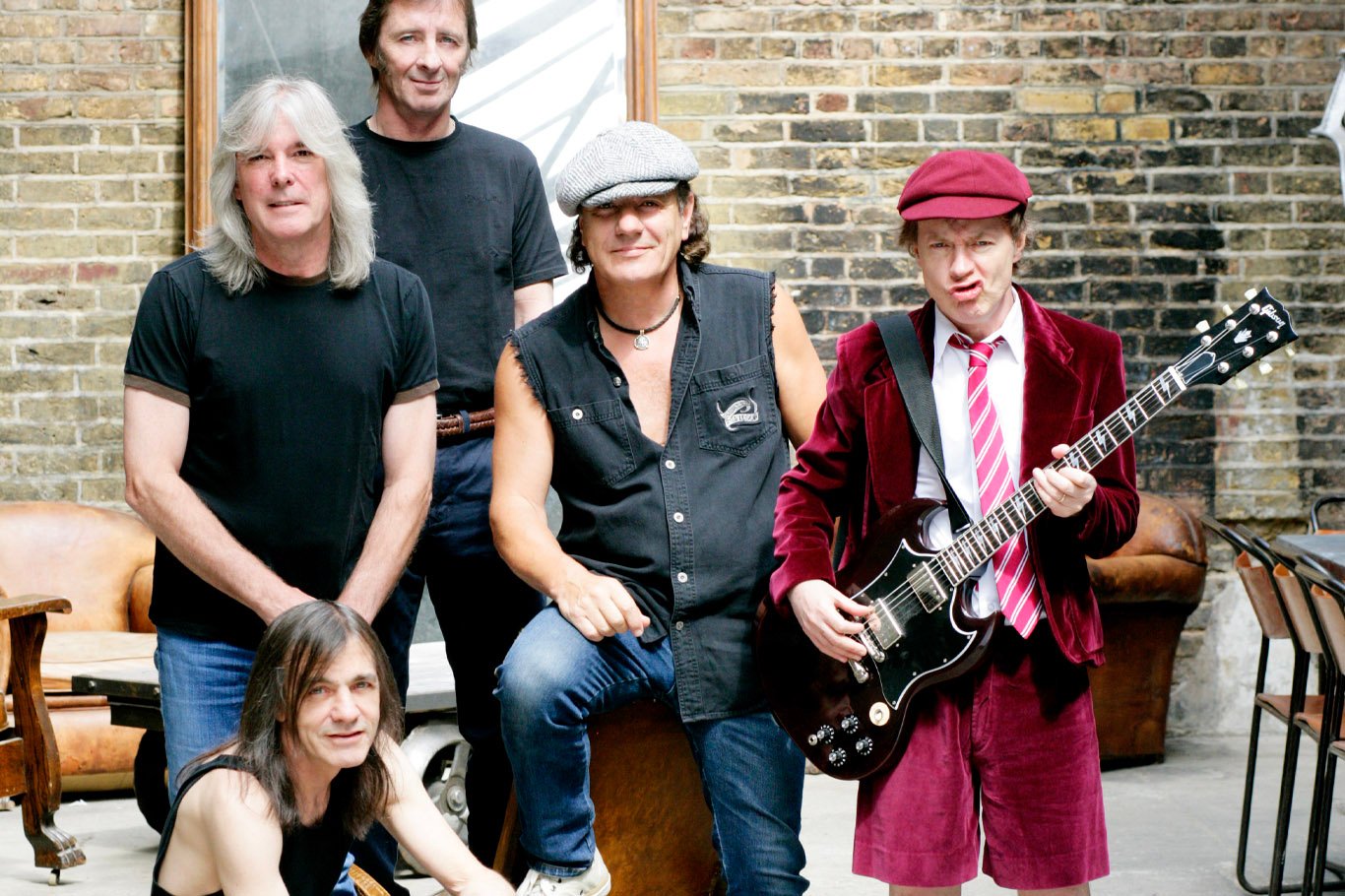
AC/DC
I’m bangin’ pots and pans, pumping my fist, doin’ duck walks and back flips off the couch, and smashing through the coffee table. I’m eight years old and I’ve just discovered AC/DC, or affectionately, “Acca Dacca”, in our unique Australian vernacular.
When I listen to (ie, crank the fuck out of) AC/DC, I feel like I’m being electrocuted in such an addictive drug-like way; I can’t stop. This is the same for the billions of other Acca Dacca heads out there. To us, AC/DC is a direct injection of high-octane rocket fuel to our adrenal glands causing them to pump harder and faster, and in terms of male fans, raising testosterone levels to alarming highs.
Seriously, science actually tested this when comparing testosterone levels of male subjects before and while listening to AC/DC and the results were staggering, similar to the effects of caffeine levels before and after sculling four Red Bull cans. It got me thinking, “I wonder what AC/DC does in women?” AC/DC have a direct ear to the primal beast in our DNA. I imagine if the caveman had AC/DC he would rock out in exactly the same manner, because they’re timeless.
"AC/DC have a direct ear to the primal beast in our DNA."
Today, AC/DC is its own entire universe and arguably the biggest most successful rock’n’roll band in the history of the planet. However, before AC/DC was “AC/DC”, George Young - older brother of Malcolm and Angus Young - was probably undoubtedly the most fundamental force to create the AC/DC big bang, with Malcolm becoming the supreme driving force behind the band.
Similar to how George fiercely captained The Easybeats to success (this is important as it’s probably the core reason we still have Acca Dacca today), Malcolm and problem child kid brother Angus would then go forward under the direction of George to build the AC/DC atomic bomb we now know.
They packed it full of their ferocious blues-infused TNT rock’n’roll boogie at the time, like Chuck Berry on steroids. Bon Scott was the lightning bolt in the middle, just like that ever elusive and mythical “lightning in a bottle”, it’s as if he actually found it and drank the entire thing himself, emerging as the band’s lewd, crude, tattooed, living-and-breathing persona, both on and off the stage.
With his life’s sexual exploits, booze-fuelled adventures becoming myth, common-man anthems and broken-hearted self-reflections giving an inner look into the sweet humble kind-hearted soul of the man, all providing the perfect lyrical swagger and depth to Mal and Ang’s new chugga-chugga all-grooving, all pile-driving iconic Aussie pub rock’n’roll rhythm machine.
AC/DC’s music on the surface to many is simple, but ask the best guitar player in the world to play “TNT” and they can’t. Truth be told, only Malcolm and Angus can really play it right, there’s a hidden groove and intensity in the attack that is almost always overlooked, yet always heard in at least the subconscious. The same can be said about the band’s almost 50-year history and in the lives of its members.
When Bon Scott left to rock another universe, most bands in that situation would derail and disappear without a trace, but not AC/DC. Not Malcolm and Angus Young. They went out and found the one other bloke on the planet who not only had the balls to step out the front into Bon Scott’s still-warm shoes, but also had the pipes to become AC/DC’s second and only other iconic voice. Delivering Back In Black with “the lads” in 1980, it’s gone onto become the highest selling rock’n’roll record in the history of the human race, fact.
Even in 2020, they’ve been in the studio and reportedly booking stadiums to tour once more. I’ll be there, I’ll be up front and screaming until my lungs fly up onto the stage on the last cannon blast.































